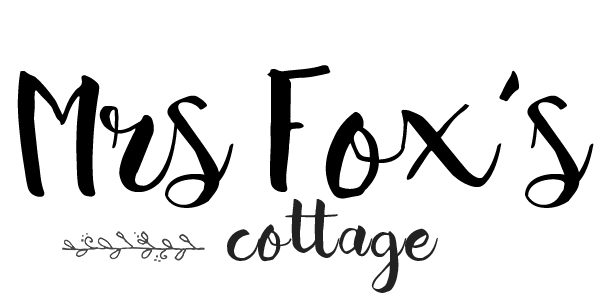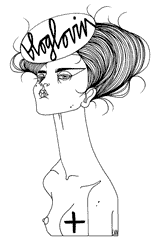In our garden in North London, when I was a child, we had an apple tree. Its' apples were tastier than any from a store, climbing it was an adventure and reading a book in it's dappled shade a delight. I knew when we bought Ash Cottage that we would plant apple trees. I dream of a wild flower meadow with my children climbing in the branches of the trees to sneak early apples from their boughs. My chickens perched in the low branches. Bee Hives below, with the bees foraging among the wild flowers.
We have cut down quite a few trees at Ash Cottage in the last few months and I am a little embarrassed by this. Not to mention concerned that all the birds that I have seen in the garden will not return. Along with the bird feeders and bird houses now hanging from the remaining trees, I need to do a bit of tree planting.
However, apple trees are not quite as simple to cultivate as I at first thought. There are pollination groups and root stock to consider, bare root or pot grown saplings to choose from. Culinary, dessert, cider or dual purpose varieties, early or late fruiting, tree, bush or pollarding to consider. Position and situation of the orchard to plan. I don't remember my parents doing anything but picking apples from the apple tree in our garden. But then it was an established tree by the time we moved in.
So, I've been reading up, and did some research online, and have chosen a group of three heritage trees;
Grenadier
James Grieves
& Blenheim Orange.
The latter was the first to be chosen;
"Blenheim Orange is a large classic English dual-purpose apple, useful for dessert and culinary purposes. It has the characteristic orange flush which is often associated with English apples".
This last line in the description called to mind the apple tree in my childhood garden, so it was my first choice. Blenheim Orange is a triploid, this means it needs two other trees to cross pollinate it.
This then dictates the other trees are from within it's pollination group,
group 3, or adjacent groups. I chose another dual purpose apple - James Grieves,
"...raised in Scotland at the end of the 19th century, the height of the Victorian period of apple development in the UK. It is a very juicy apple, producing plenty of sharp-tasting apple juice."
James Grieve is an excellent pollinator for many other apple varieties and is a variety that matures mid-season, while Blenheim Orange is a late variety
. My final choice was Grenadier, an early season cooking apple, that is apparently "fool-proof" to grow. I ordered bare root trees. These are young trees that are dug up whilst the tree is dormant for winter. They can usually be ordered between November and March and need to be in the ground by the end of this month, before the tree comes out of it's dormant period.
They were delivered last Monday by courier, in a box, quite large, bare, twigs with a bit of netting on the bottom. As they are dormant, they look, well, to be honest, quite dead. It feels like we have just spent a lot of time planting dead bits of twig in the ground and I keep going out there and gazing at them in the hope of seeing something that looks a bit more alive. I made the classic error, that I was warned against in my reading, of not preparing the holes before the trees arrived and as
my last post details they were delayed going into the ground by a long deeply sunk metal post, or 3.
I ordered the trees on M26 rootstock. This is a semi-dwarf variety. Rootstock, and I think I may be becoming an apple tree nerd here, I found fascinating. Apples trees are made up of 2 parts, the largest part being the scion, which is the fruiting tree of the variety you have chosen, and it's rootstock, which in apple trees is usually another apple tree. The scion is grafted onto the rootstock primarily to control the size of fruit trees, but also allow trees to grow in local environmental conditions and may provide some disease resistance. However it is not a straight forward as root-stock = tree size, local conditions, pruning and species of tree all play a part.

I was going for a tree, but not too massive so M26 rootstock is bigger than M9 (which is used in commercial orchards) but smaller than M111. As apple trees are probably the first trees humans ever intentionally grew for fruit, and have been cultivated for thousands of years in Asia and Europe, we've spent a lot of time messing with them, grafting them onto this, that and the other.
So I know that my M26 rootstock is derived from the M9 (or MIX) rootstock produced in 1917 by the East Malling Research Station in Kent (still up and running;
http://www.emr.ac.uk/). M9 is derived from the
Paradise rootstock "Jaune de Metz". Paradise was the most widely used rootstock in the 19th Century with a wide variety of vigours and no standardisation, until the East Malling Research Station began classifying rootstock and developing new ones for specific purposes in 1912.
I'm sorry, I told you I've become a rootstock nerd. Anyway I found the whole thing fascinating and it has made me want to plant a mixed fruit orchard. We have about 6 fruit trees already in the garden; 3 greengage, and 3 damson or plum trees, we think. There is also a little line of sloe bushes at the end of the garden. I would like a Quince tree. Raspberries, gooseberries, black currants and rhubarb are going over in the veggie patch. And Mum has given me a fig tree, but I think I am going to return that to a plant pot over by the house as it is more sheltered.
READING:
River Cottage Handbook No.9 - Fruit by Mark DiaconoFork to Fork - Monty & Sarah Don
LINKS:When I was looking to purchase trees I found both the following nurseries' really helpful and informative both online and in person on the phone. I only bought from one, but it simply came down to what stock they had available as I was trying to purchase the bare root trees late.
http://www.blackmoor.co.uk/
http://www.orangepippintrees.co.uk/
Joining in with Annie at Mammasaurus for "How Does Your Garden Grow" again this week.































































